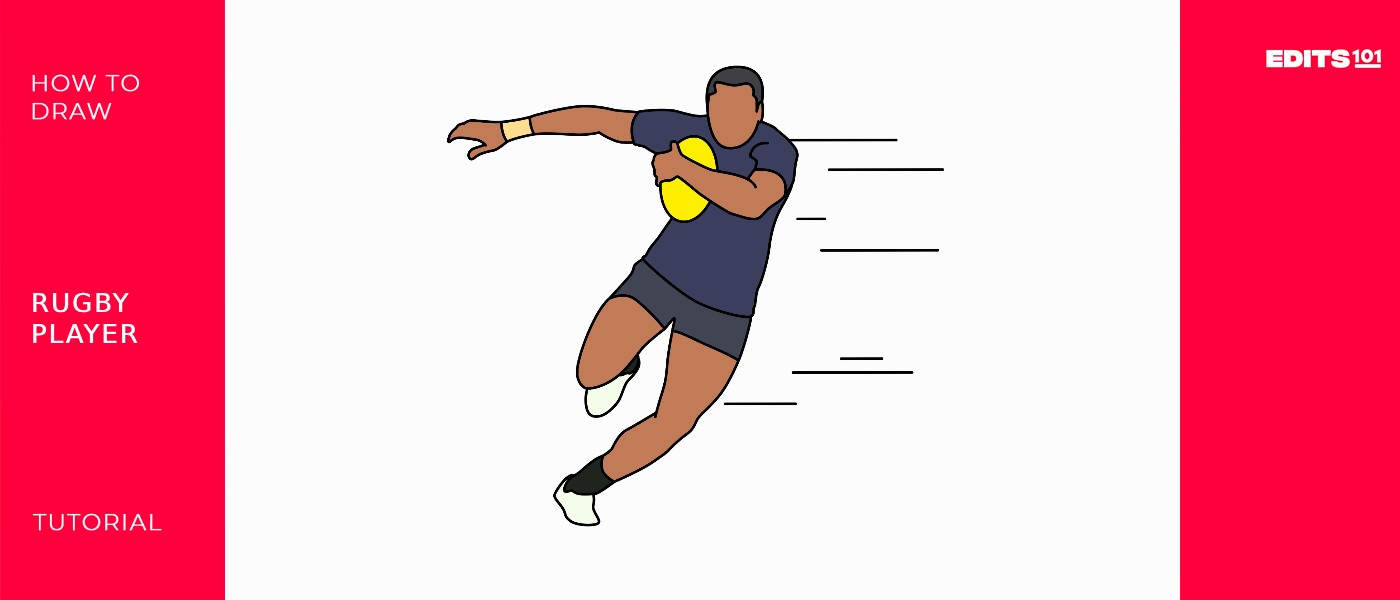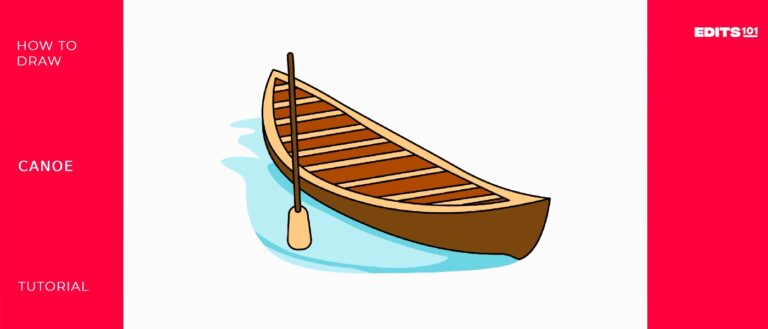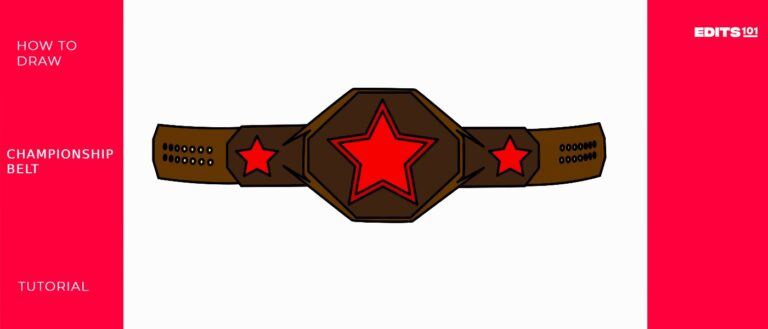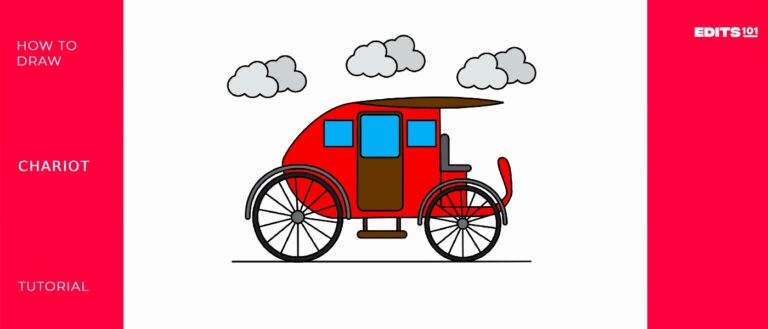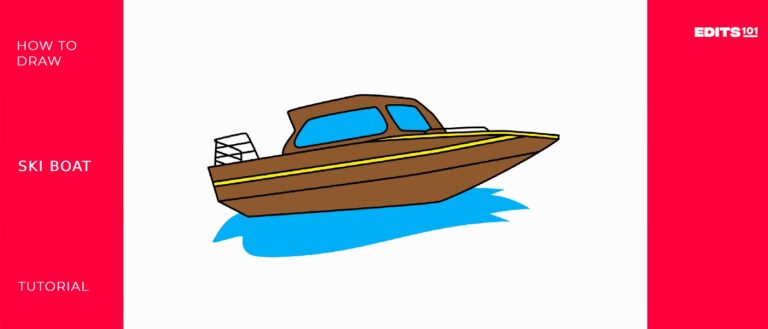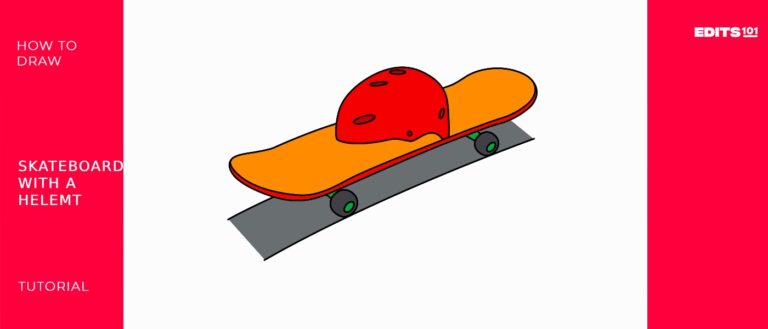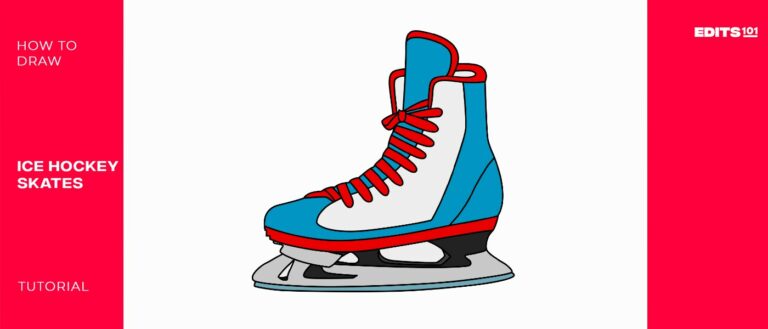How To Draw A Rugby Player | A 7-Step Guide
Rugby is a contact team sport with two main variants: rugby union and rugby league. In rugby union, teams of 15 players compete to score points by grounding the ball in the opponent’s in-goal area or kicking it through the posts. The game is characterized by continuous play, set pieces like scrums and lineouts, and a focus on teamwork.
Rugby players demonstrate immense talent, strength, and dedication to a dynamic, full-contact sport. Learning to draw a rugby athlete can be an enjoyable way for budding artists and rugby fans to celebrate the power and skill of participants. In this beginner’s guide, we’ll outline straightforward steps for depicting a primary rugby player in motion. With some practice, you’ll draw your spirited rugby player artwork!
| Steps | Complexity level |
| Draw the head | 2 |
| Draw the jersey | 3 |
| Draw the hands | 2 |
| Draw the rugby ball | 1 |
| Draw the shorts | 3 |
| Draw the legs | 4 |
| Draw the shoes | 3 |
What you will need
- Paper
- Pencil
- Eraser
- Coloring supplies (optional)
Draw a rugby player.
The essentials for drawing a simple rugby athlete are paper, a pencil, and an eraser. This allows you to sketch the essential forms. If you wish to color later, having supplies like markers or colored pencils is helpful but optional for starters. The critical thing is grabbing your drawing fundamentals to capture basic rugby player postures. We will start the fun part – learning to draw a rugby athlete!
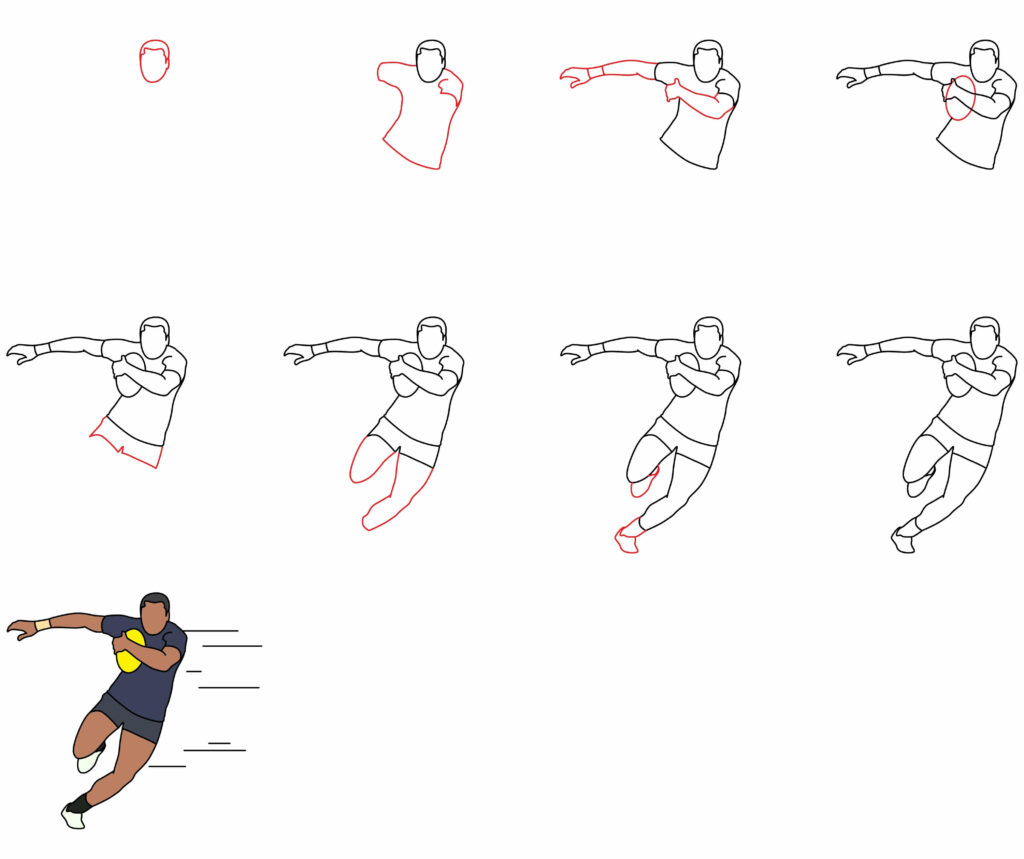
Step 1: Draw the Head
To start, lightly sketch an oval shape near the top of your paper for the rugby player’s head. Add a curved line across the lower half of the chin. Sketch a tilted oval on top for the helmet and two small ovals on the side for the ears. Angling the head oval indicates movement. Keep the lines basic to establish the framework.
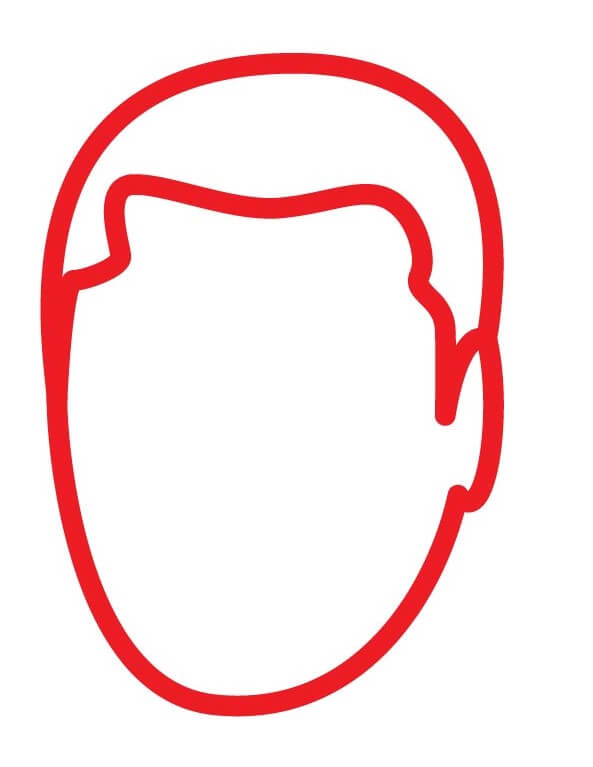
- Lightly draw an oval for the head shape
- Add chin line and tilted helmet
- Sketch ears on the side
- Tilt ovals to show movement
Step 2: Draw the jersey
Rugby players wear loosely fitted uniforms with striped detailing. Attaching to the neck area of the helmet, sketch the collared outline of the jersey using curved and angular lines. Include broad shoulder seams that angle down the torso. Sketch details like curved fabric crease lines, striped bands on the sleeves, and a bold team logo on the chest. Add a line down the middle for the center placket opening secured by athletic tape strips. Structuring appropriate proportions that capture the baggy, muscular fit will convey realism.
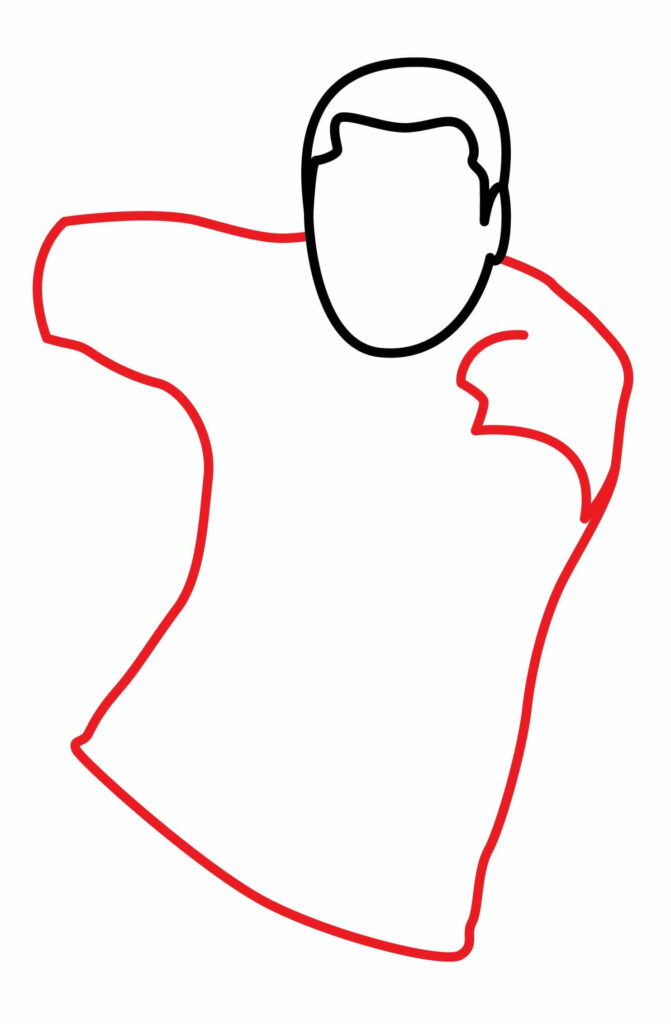
- Attach head to jersey neck oval.
- Add shoulder curves and body lines.
- Sketch jersey stripes and sleeve bands
- Draw some crease curves
Step 3: Draw the hands
Rugby play centers around confidently passing, catching, and carrying the ball. For the hands and arms, start with the left hand curved in a “C” cradling shape, holding the bottom tip of a rugby ball shape. Angle this hand and foreshort arm back toward the torso. On the opposite side, draw an arrow with separated fingers outstretched, ready to receive a pass. Foreshorten this arm coming forward. Keep the hands large and exaggerated to match rugby player proportions.
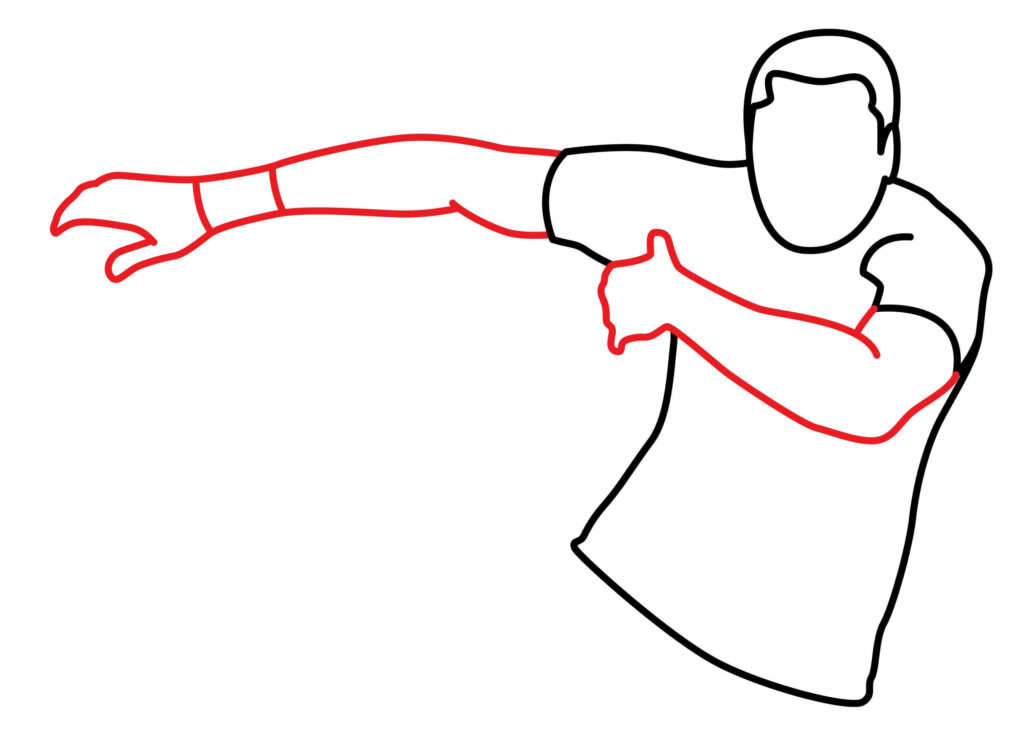
- Draw a small circle for ball on the left side
- Add angled arm line and grasping hand
- Sketch opposite angled arm and raised hand
Step 4: Draw the rugby ball
Rugby balls have a distinctive elliptical, pointed-end shape. Where the player’s left-hand grips, the complete top half of the ball shape is extended using an oval line that angles in points, add a curved seam line wrapping around the exposed midsection. Darken the left-hand area behind the ball shape for depth illusion. Take care to accurately depict the right ball proportions grasped by the large hand.
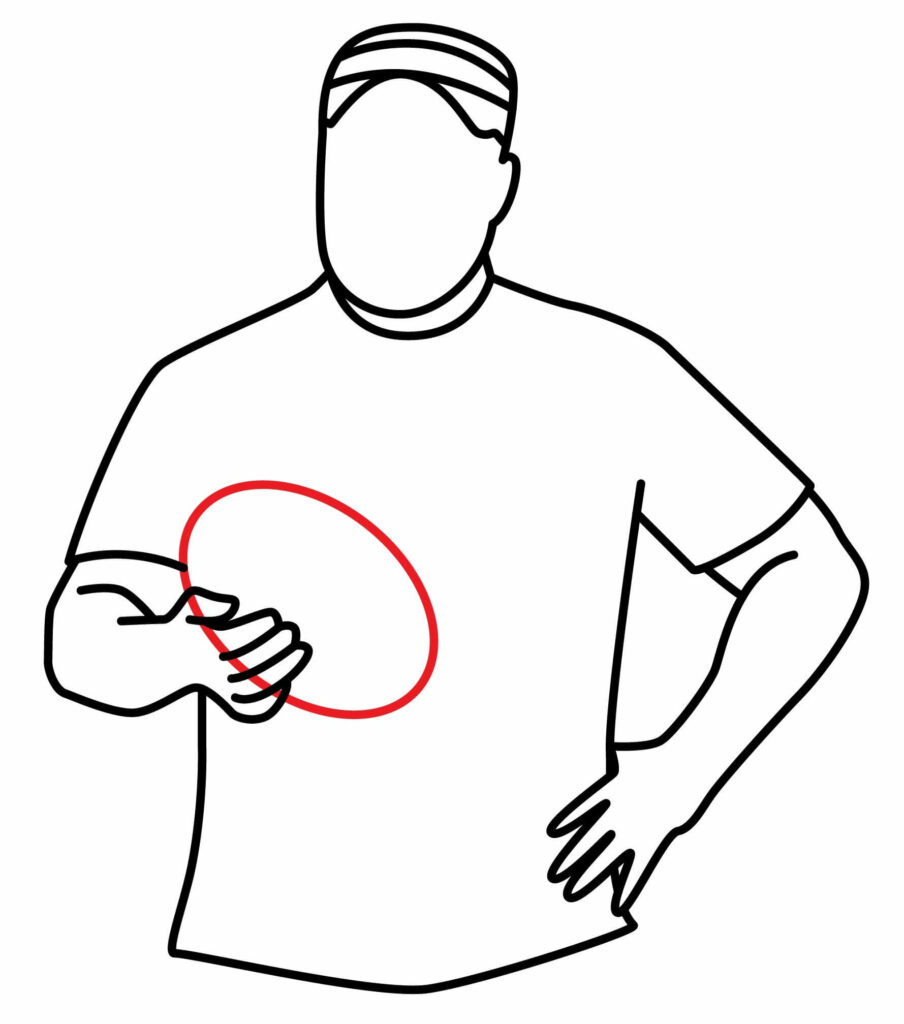
- Draw curved seam lines around the oval ball
- Add small grip oval textures
- Darken left-hand lines behind the ball
- Depict realistic grasped proportions
Step 5: Draw the shorts
Rugby uniforms include athletic shorts with protective padding underneath. Attaching to the hip of the torso, sketch an inverted teardrop shape on the left for the open leg of the shorts. Add appropriate muscle contour crease lines and smaller shapes for protective pads and belts on the outer thighs. Move to the right side and draw more athletic short outlines following the running motion line of the leg. Structuring appropriate fabric drapery and anatomy enhances realism.
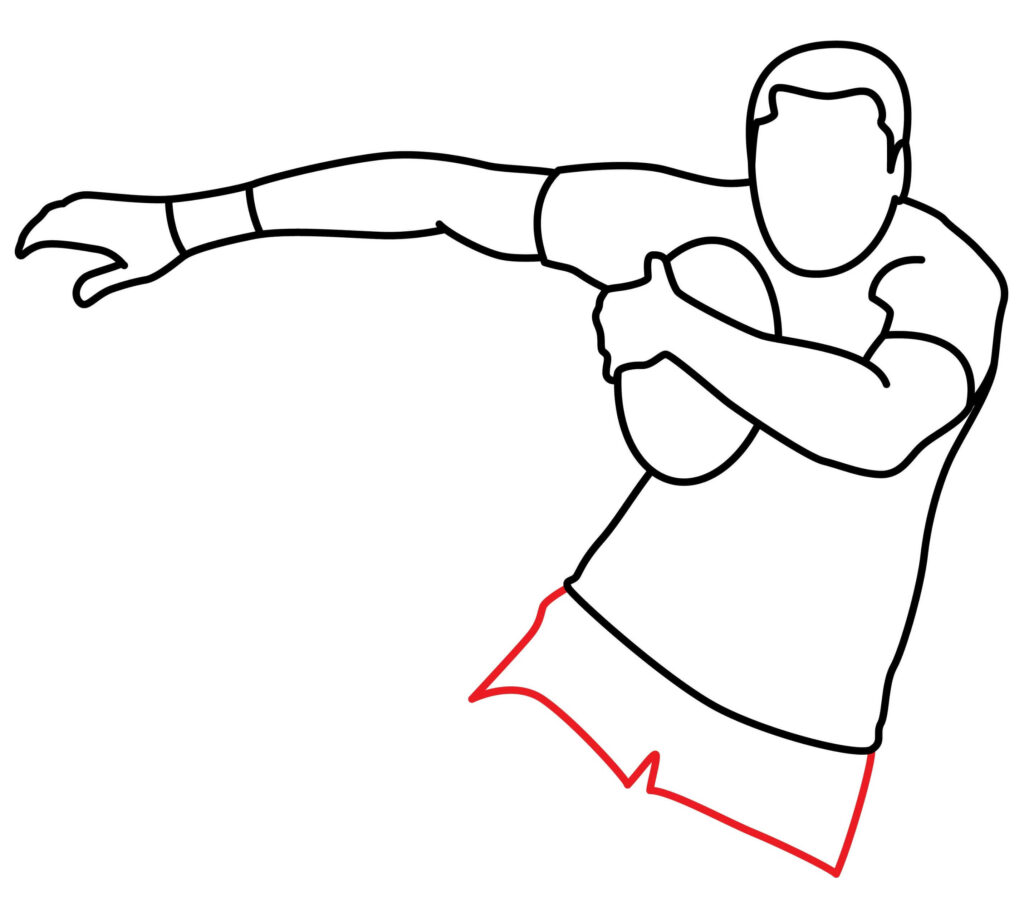
- Attach oval shorts shape on the left
- Sketch angled leg lines tapering down
- Add a curved seam line on the right side
- Draw shorts waistline
Step 6: Draw the legs
Rugby requires running and kicking. Lightly draw bent lines for the legs in active stride. Add curved shin lines and a tilted, foreshortened rectangle for the right cleat. Sketch the left cleat smaller to show depth. Capture the player mid-movement with leg poses.
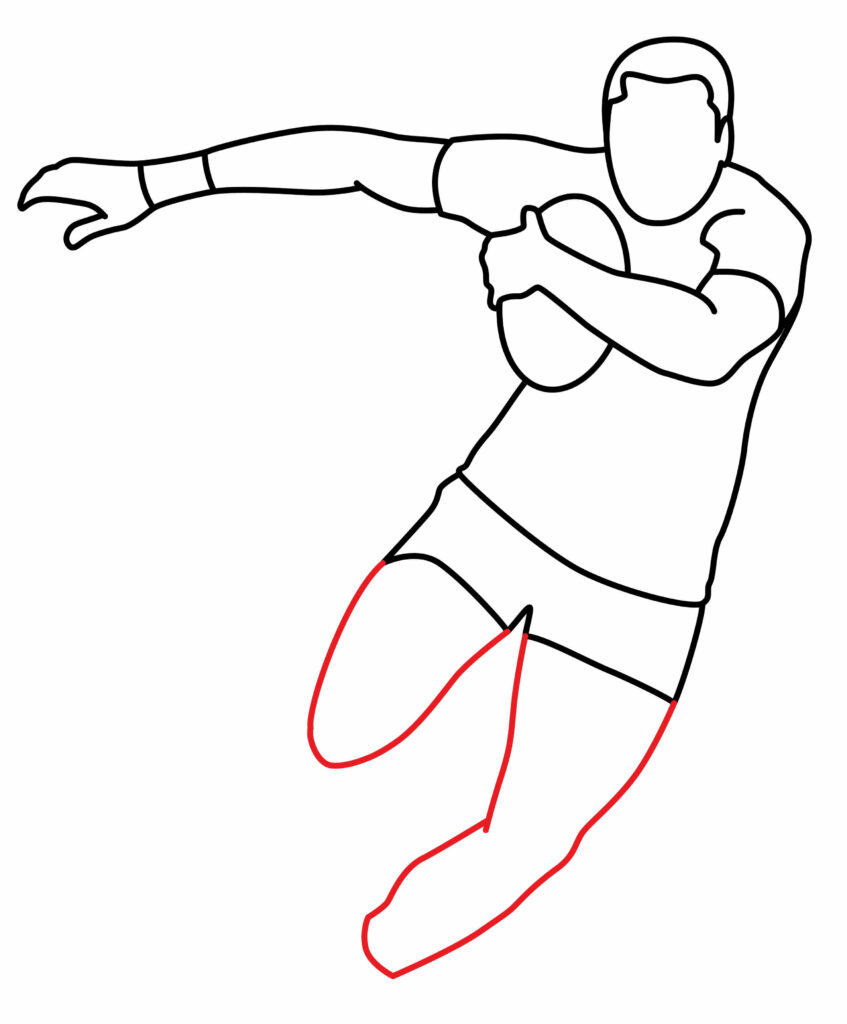
- Bent leg lines show an active stride
- Curved shin and angled cleat lines
- The right cleat is larger, left more minor for depth
- Depict movement with leg poses
Step 7: Draw the shoes
Finally, detail the cleated rugby boots. Use zigzag and angled lines to form studs on the bottom of each sole. Add lines across the foot opening and up the ankle. Sketch loose shoelace crisscross shapes dangling from the cleats for realism.
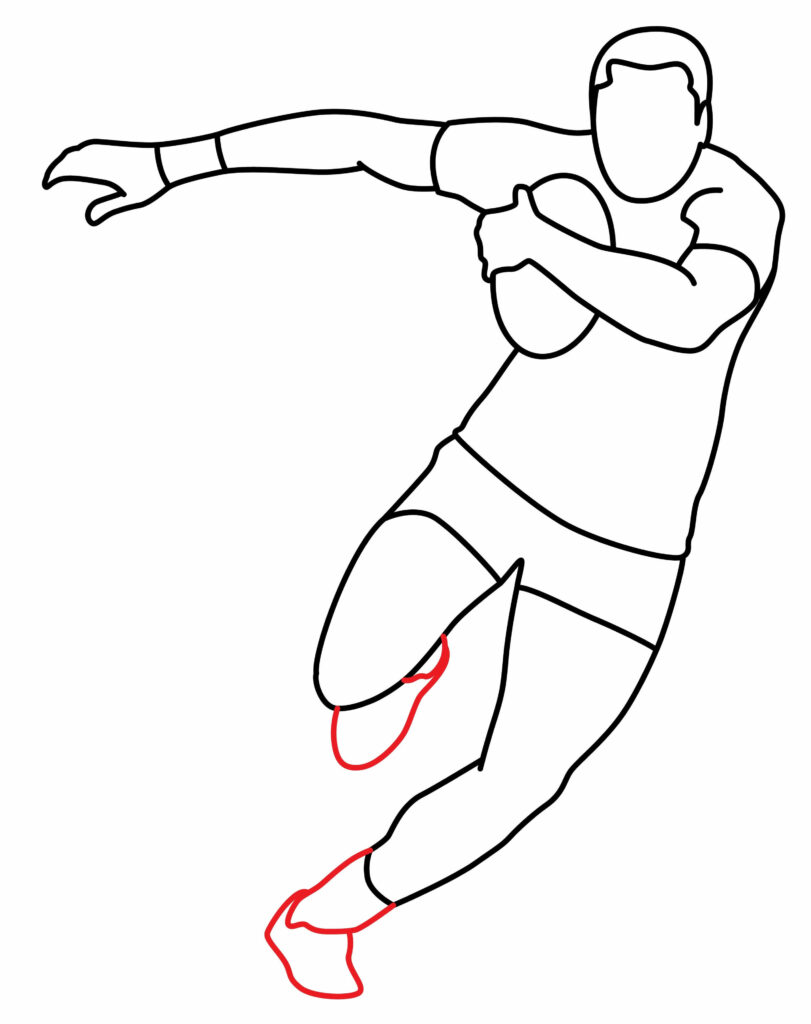
- Crisscross zigzag lines for cleat studs
- Lines across foot opening and ankle
- Loose dangling shoelace shapes
Step 8: The rugby player is ready
The rugby player is ready to have a match. You did an excellent job. You created your rugby player, and we’re sure you followed every instruction. You can use a marker to outline the drawing to make it stand out. To improve the appearance, we will remove the pencil marks after tracing.
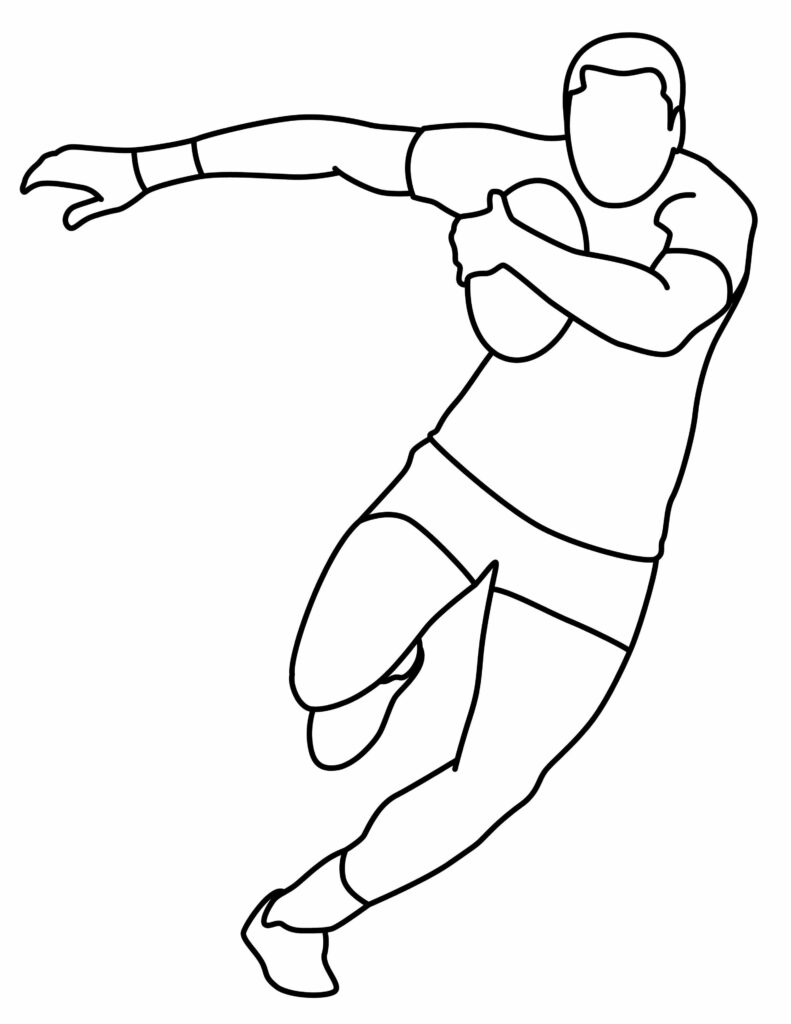
The actual fun is about to start. We are going to improve and add authenticity to our drawing. Can you produce a more refined picture with your creativity and imagination?
Taking your rugby player to the next level
Sketching is a talent that takes practice, just like any other. Make time every day to draw, even if it’s just for a little period. Pay attention to your surroundings. This improves understanding of shapes, proportions, and details. You can begin with the fundamentals and progress to more complex subjects. Try using various drawing instruments such as colored pencils, charcoal, watercolors, markers, and pencils. Each media has distinct qualities that could assist you in determining your favorites.
Basic hatching, blending, shading, and cross-hatching methods are also available for experimentation. Understanding these methods will improve your drawings‘ intricacy and realism significantly. Use your creativity and experiment with fresh ideas when you’re drawing.
Adding a Background
A thoughtfully composed background puts your rugby player illustration into a purposeful context, telling a richer visual story. Consider sketching a scrum for a relatable rugby setting with opposing players contesting for the ball. Use simple shapes and lines to quickly depict motion and confrontation. Or draw a try line and uprights to set the scene for scoring a dramatic winning try.
For a sports portrait approach, leave the background neutral. Carefully erase pencil lines for a clean white backdrop highlighting your athlete’s artwork. Having the dynamic body pose implies motion against space. Get creative with rugby-inspired environments that complement your player as the focal point!
Adding Color
Vibrant color conveys energy and brings realism to your rugby player artwork. Use classic team jersey hue combinations like blacks, reds, greens, blues, or yellows. Shade the fabric with light and dark tones to show form and folds. Color the shorts and socks with contrasting team patterns. Paint the boots in realistic black and metal. Use natural skin tones for the face and any visible arms or legs. Vary the studded cleat tips to bright white to activate the focal point. Add grass textures and field lines by blending green and white. Vivid colors make your player pop!
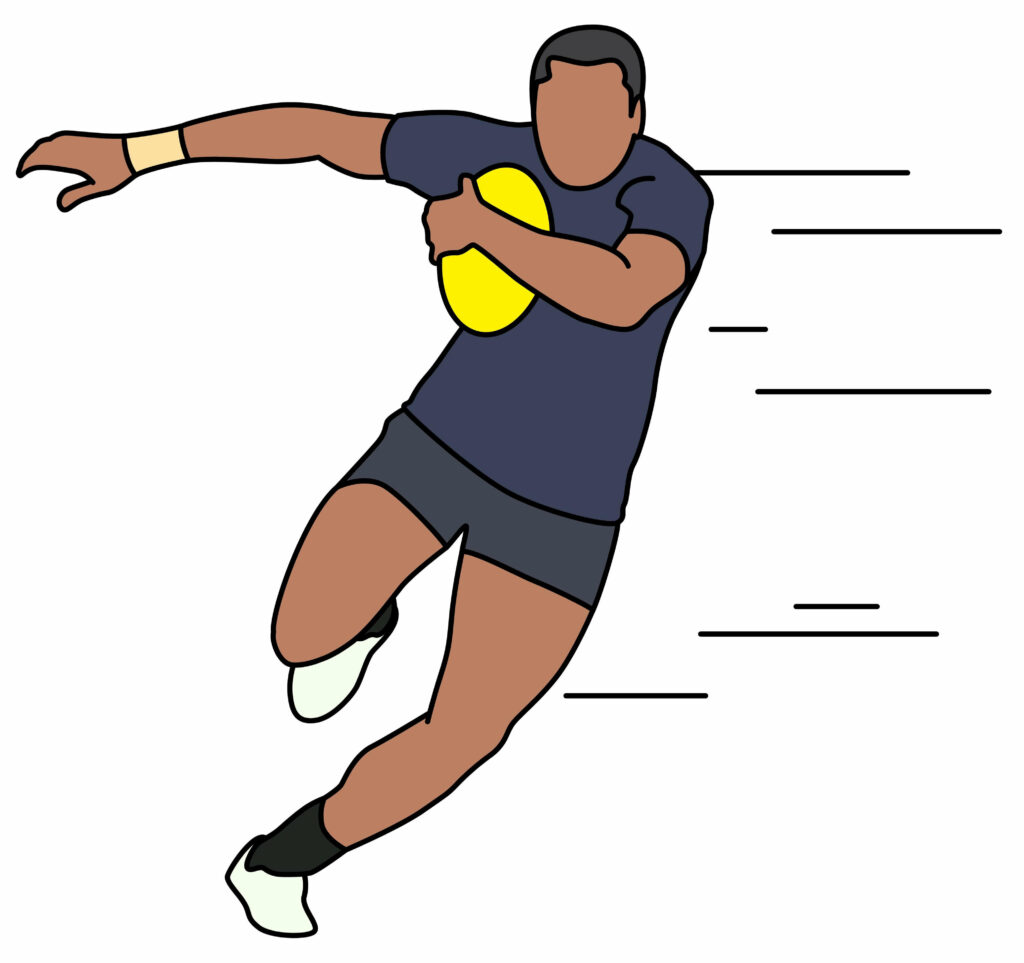
Bonus Tips
Some tips can help you take your drawing to a new level. Lightly sketch the body form before adding detail. Use photos of athletes in action for natural poses. Overlap shapes to show depth perspective. Pay attention to proportions as you build the body. Add variation with different player sizes and ages. Depict female athletes for inspiration. Draw backgrounds related to memorable games. Shade areas in contrasting tones for emphasis. Use clean strokes and gaps between colors. Mix media like paint pens and colored pencils. Do not limit yourself to these ideas; explore and let your imagination go wild.
Conclusion
Drawing your spirited rugby player blends sports fandom with artistic talent. Follow the straightforward steps in this guide to build a basic rugby athlete framework. Start with the head, then construct the body with strategic lines and shapes. Infuse your unique creative choices through color, background context, and bonus details. The result will be a personally expressive rugby player artwork you can share and enjoy!
Depicting rugby’s impressive athleticism is a fulfilling artistic endeavor. Repeated practice will improve your observation skills, proportion awareness, and composure. Piecing this classic sports subject together also allows admiration for the athletes’ dedication. So grab your drawing tools, find dynamic photo references, and get ready to honor the energy of rugby creatively!
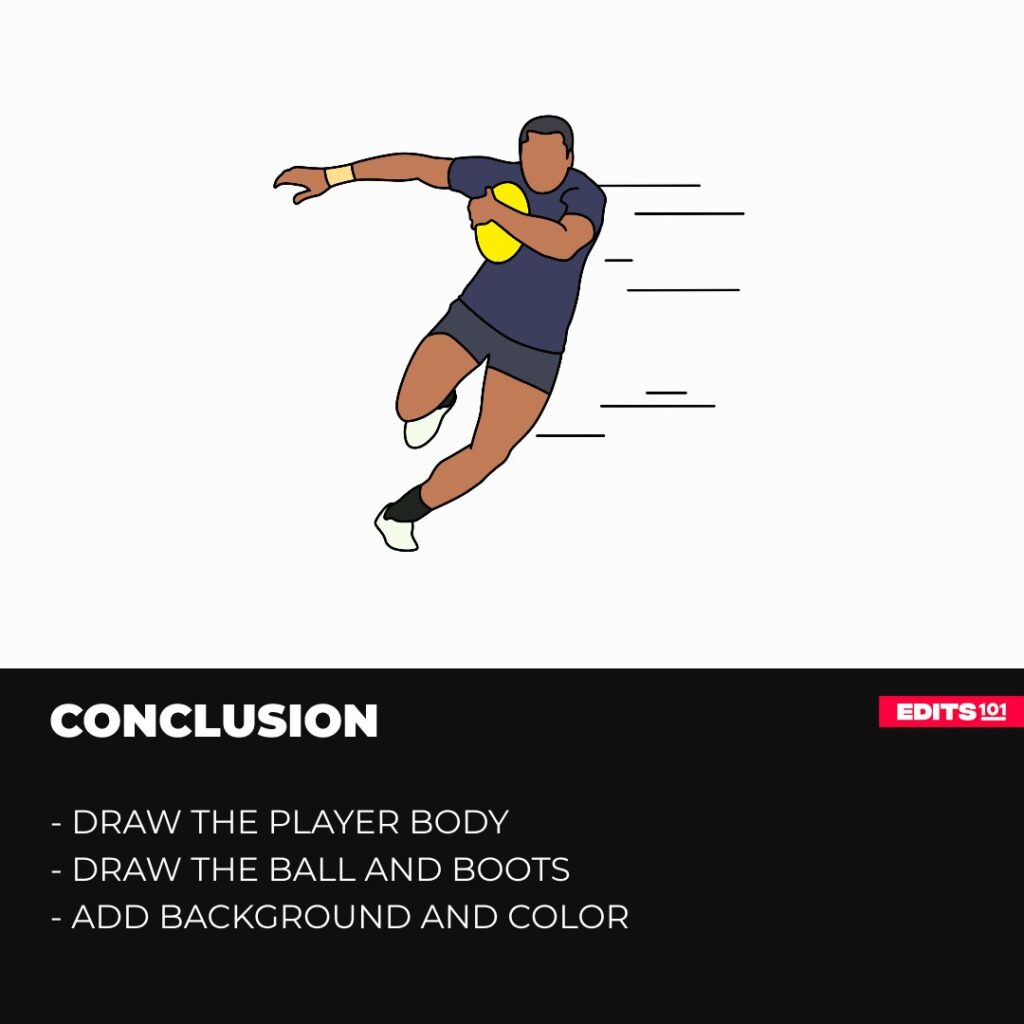
Thanks for reading & feel free to check out more of our articles!
Author Rating
Overall Rating
Summary
This guide explains how to draw a rugby player. You will also interesting facts about the game.

